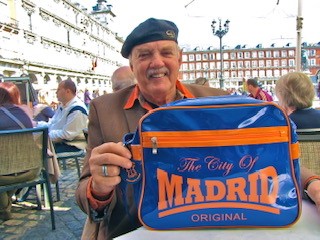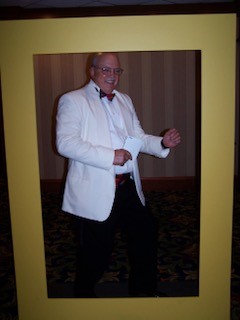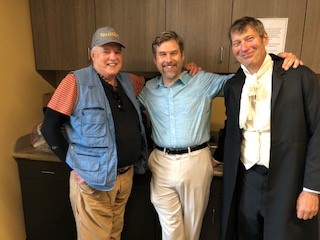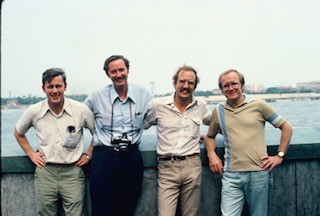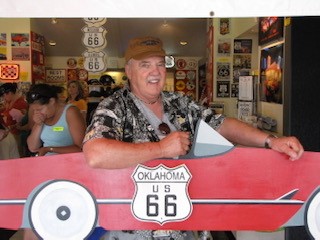Nick Peckham
Nick Peckham first met Kit after seeing a flyer for a talk at the Museum of Art & Archology in the 1990s titled “Urban Geography,” which, of course, was taught by Kit.
“It sounded interesting, so I went,” Peckham says. “Sure enough, Kit Salter gave an animated and interesting talk on a topic he is quite expert in.”
At presentation’s end, Peckham introduced himself, saying “Dr. Salter, that was a great talk except for one thing: everywhere you used the word ‘geography’ you should have used the word ‘architecture.’
“Since his son, Hayden, is an architect, I know he understood this was a compliment. That was the beginning of a friendship that has lasted more than a quarter century. Later he asked me to give a talk in the geography department. Then in turn, I asked him to serve as ‘staff geographer’ for my architecture firm.”
Kit agreed, setting up an office in the basement of Peckham’s building at 15 S 10th Street in Columbia. There Kit wrote and updated his textbook, “Fundamentals of World Regional Geography”, which is used throughout the country.
“I was proud to say that we are the only architecture firm in the USA with a staff geographer,” says Peckham.
The duo also tried their hand at a joint book — Peckham writing one chapter, followed by Kit writing another, and so on. But they soon learned they had much different writing styles. “Our brains are so different,” Peckham recalls. “It was a disaster.”
Kit and Peckham fast became friends. “Kit and Cathy often invited Diane (Peckham’s wife) and I, and many others, for a meal at Breakfast Creek (Kit and Cathy name their homes),” he recalls. “These gatherings of interesting people, great conversation (and dozens of cats) led to a profound appreciation of one another all around. At one of these gatherings, Kit announced: ‘We are moving to Albuquerque.’ This made no sense to me, so I made a motion for a democratic vote on this matter. It was unanimous: ‘Don’t go!’”
Kit, who had since retired from the department, and Cathy went anyway and a few months later, Peckham and Diane drove to New Mexico to see Kit and Cathy, as well as Peckham’s sister who had lived there for decades.
“We called in advance,” Peckham recalls. “They knew we were coming. Their house was on a double lot and Cathy was working hard on a new and very large garden. But when we arrived, we knew right away something was wrong. We went to dinner at a nearby restaurant where we held a wide-ranging discussion that included comments on this move not being what they had hoped for.”
A few months later, Kit and Cathy decided to move back to Missouri. “’That’s great,’ was my reply. They found Boomerang Creek, a sturdy rustic home with a two-story, three-car garage. The garage building was renovated into a lower-level writing studio/office for Cathy, and an upper-level office for Kit.”
They’ve shared many meals together since. “Most recently, Diane and I went to Boomerang Creek for dinner and to look at the alignment of the planets. During this meal, they announced they are moving to California to a town they have never been in. My jaw dropped. But their logic is sound. They love California, and their daughter lives there, too. So now, to dine with the Salters, the drive increases from 20 to 2,000 miles. A journey worth taking.”


